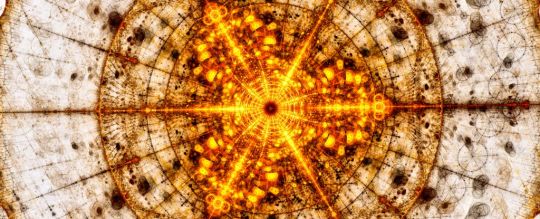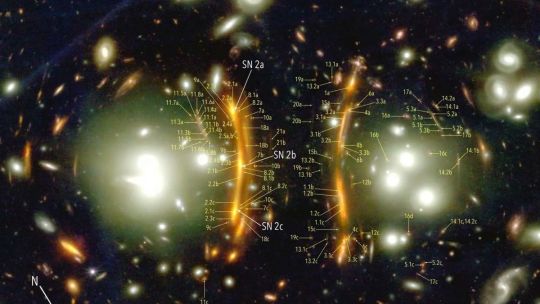Text
Hypothetical #Planet 9, a world that may be lurking in the outer reaches of our #solar system.
#solar system#planet#new planet#science#earth#space#discover#top#top 10#sun#moon#jupiter#uranus#space time#space travel
0 notes
Text

Let the #future tell the #truth, and evaluate each
one according to his #work and accomplishments.
The present is theirs; the future, for which I have really
worked, is mine.
#quantaum#quotes#physics#nikola tesla#tesla electric#tesla earthquake#teslamotors#future#workinprogress#research scientist
0 notes
Text

What About Your Sense ? Flat #Earth ?
#universe#space#solar system#sun#moon#neil degrasse tyson#astronomy#magic of science#rocket#jwst#hubble#quotes#sky#stars#earth#earth science#science
0 notes
Text
The James Webb Space Telescope Identifies the Most Ancient Galaxies Ever Recorded, and Their Appearance Defies Our Preconceptions.
The James Webb Space Telescope Identifies the Most Ancient Galaxies Ever Recorded, and Their Appearance Defies Our Preconceptions.
One of the James Webb Space Telescope‘s principal science goals is to observe the epoch where we think that the first galaxies were created, to understand the details of their formation, evolution, and composition.
The big galaxy in the foreground is named LEDA…

View On WordPress
1 note
·
View note
Text
Nikola Tesla: The remarkable journey of a contemporary Prometheus
Nikola Tesla: The remarkable journey of a contemporary Prometheus
The inventor at rest, with a Tesla coil (thanks to a double exposure). Dickenson V. Alley, Wellcome Collection, CC BY Richard Gunderman, Indiana University
Match the following figures – Albert Einstein, Thomas Edison, Guglielmo Marconi, Alfred Nobel and Nikola Tesla – with these biographical facts:
Spoke eight languages
Produced…

View On WordPress
0 notes
Text
Confirmed: Neutrinos have been observed in a collider experiment for the very first time.
Confirmed: Neutrinos have been observed in a collider experiment for the very first time.
The ghost, at long last, is actually in the machine. Earlier this year, for the first time, scientists detected neutrinos created in a particle collider.
Abstract impression of a particle collider. (sakkmesterke/iStock/Getty Images Plus)
Those abundant yet enigmatic subatomic particles are so removed from…

View On WordPress
0 notes
Text
An ancient supernova captured in an image from the James Webb Telescope has the potential to contribute to solving one of the universe's most significant enigmas.
An ancient supernova captured in an image from the James Webb Telescope has the potential to contribute to solving one of the universe’s most significant enigmas.
NASA’s James Webb Space Telescope has spotted a distant supernova that appears three times in the same photo. The new observations could help solve one of the universe’s biggest inconsistencies.
A rare, warped supernova that appears…

View On WordPress
0 notes
Text
The James Webb Space Telescope has unveiled that the TRAPPIST-1 exoplanet appears to lack an atmosphere, but the answer to this mystery might be connected to its host star.
The James Webb Space Telescope has unveiled that the TRAPPIST-1 exoplanet appears to lack an atmosphere, but the answer to this mystery might be connected to its host star.
Churning magnetic activity on the surface of TRAPPIST-1’s red dwarf star is interfering with the JWST’s efforts to determine whether any of the orbiting planets are habitable.
Efforts to observe the atmospheres of planets in…

View On WordPress
0 notes
Text
The James Webb Telescope Discovers Numerous Early Universe Galaxies Resembling the Milky Way, Defying Expectations of Their Existence.
The James Webb Telescope Discovers Numerous Early Universe Galaxies Resembling the Milky Way, Defying Expectations of Their Existence.
Thousands of disk galaxies like our own Milky Way were spotted in the early universe, where they shouldn’t exist.
The James Webb Space Telescope (JWST) has found more than 1,000 galaxies mysteriously resembling our own Milky Way hiding out in the early…

View On WordPress
0 notes
Text
James Webb Telescope's Shocking Saturn Discovery - You Won't Believe What We Found!
James Webb Telescope’s Shocking Saturn Discovery – You Won’t Believe What We Found!
Saturn is one of the most iconic and recognizable planets in our solar system. Here’s a description of Saturn:
Appearance: Saturn is often referred to as the “Ringed Planet” because of its stunning and distinctive ring system. These rings are made up of countless icy and rocky particles that orbit the planet.…

View On WordPress
0 notes
Text
NASA Discovers Underground Ocean On Pluto! Should It Be Planet Again?
NASA Discovers Underground Ocean On Pluto! Should It Be Planet Again?
Pluto is a dwarf planet located in the Kuiper Belt, characterized by its small size, icy composition, unique orbit, and the historic visit by the New Horizons spacecraft, which greatly expanded our understanding of this distant world.
Pluto’s image taken by New Horizons on July 14, 2015, from a range of 22,025 miles (35,445…

View On WordPress
0 notes
Text
A New Study Suggests Alien Life Might Not Necessarily Rely on Carbon-Based Chemistry
A New Study Suggests Alien Life Might Not Necessarily Rely on Carbon-Based Chemistry
Intriguing ‘autocatalytic’ reactions appear to be far more common than scientists had thought.
Self-sustaining chemical reactions that could support biology radically different from life as we know it might exist on many different planets using a variety of elements beyond the carbon upon which Earth’s life is…

View On WordPress
0 notes
Text
What Did NASA Discover in Latest Photos from Mercury?
What Did NASA Discover in Latest Photos from Mercury?
Mercury is the smallest planet in our solar system, located closest to the Sun.
It is a rocky, terrestrial planet with several unique characteristics:
Size and Location: Mercury is about 4,880 kilometers (3,032 miles) in diameter, making it the smallest of the eight planets in our solar system. It orbits the Sun at an average distance of…

View On WordPress
0 notes
Text
Powerful black holes might grow up in bustling galactic neighborhoods
Powerful black holes might grow up in bustling galactic neighborhoods
A quasar is a galactic object with a supermassive black hole in the center. International Gemini Observatory/NOIRLab/NSF/AURA/P. Marenfeld, CC BY-NC-SA Jaclyn Champagne, University of Arizona
As people, we are all shaped by the neighborhoods we grew up in, whether it was a bustling urban center or the quiet countryside.…

View On WordPress
0 notes
Text
This Exoplanet is Probably a Solid Ball of Metal
This Exoplanet is Probably a Solid Ball of Metal
We can’t understand nature without understanding its range. That’s apparent in exoplanet science and in our theories of planetary formation. Nature’s outliers and oddballs put pressure on our models and motivate scientists to dig deeper.
Gliese 367 b (or Tahay) is certainly an oddball. It’s an Ultrashort Period (USP) planet that orbits its star in…

View On WordPress
6 notes
·
View notes
Text
The James Webb Telescope Detects Possible Indications of Extraterrestrial Existence Within the Atmosphere of a Remote 'Goldilocks' Aquatic Planet.
The James Webb Telescope Detects Possible Indications of Extraterrestrial Existence Within the Atmosphere of a Remote ‘Goldilocks’ Aquatic Planet.
NASA’s James Webb Space Telescope has detected potential traces of dimethyl sulfide, a chemical only known to be created by phytoplankton on Earth, in the atmosphere of an exoplanet believed to have its own liquid ocean.
Earlier this week, Live Science…

View On WordPress
0 notes
Text
Was There Anything Before The Big Bang?
Was There Anything Before The Big Bang?
The most distant objects in the universe are also the most ancient. When we look at the Andromeda galaxy, we’re seeing it as it was 2.5 million years ago. Reflection of sunlight off of Jupiter takes 30 minutes to reach us, and even more nearby objects don’t show up exactly as they are right now.
The earliest light scientists have detected is from when the…
View On WordPress
0 notes